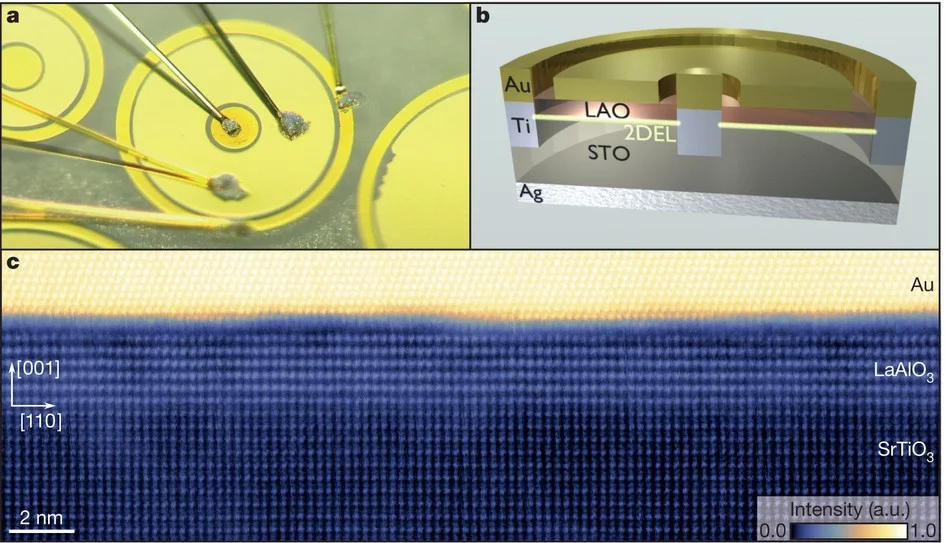Abstract:
The physics of the superconducting state in two-dimensional (2D) electron systems is relevant to understanding the high-transition-temperature copper oxide superconductors and for the development of future superconductors based on interface electron systems. But it is not yet understood how fundamental superconducting parameters, such as the spectral density of states, change when these superconducting electron systems are depleted of charge carriers. Here we use tunnel spectroscopy with planar junctions to measure the behaviour of the electronic spectral density of states as a function of carrier density, clarifying this issue experimentally. We chose the conducting LaAlO3–SrTiO3 interface as the 2D superconductor, because this electron system can be tuned continuously with an electric gate field3. We observed an energy gap of the order of 40 microelectronvolts in the density of states, whose shape is well described by the Bardeen–Cooper–Schrieffer superconducting gap function. In contrast to the dome-shaped dependence of the critical temperature, the gap increases with charge carrier depletion in both the underdoped region and the overdoped region. These results are analogous to the pseudogap behaviour of the high-transition-temperature copper oxide superconductors and imply that the smooth continuation of the superconducting gap into pseudogap-like behaviour could be a general property of 2D superconductivity.
Keywords: Conducting interfaces; LaAlO3–SrTiO3; Tunnelling spectroscopy; Superconductivity;
Facility: ENE, MPI, Cornell, Augsburg, Stanford, LMX, Thin Films and Interfaces
Reference: C. Richter, H. Boschker, W. Dietsche, E. Fillis-Tsirakis, R. Jany, F. Loder, L. F. Kourkoutis, D. A. Muller, J. R. Kirtley, C. W. Schneider, and J. Mannhart; Nature 502, 528–531 (2013)
Read full article: here
Facility: ENE, MPI, Cornell, Augsburg, Stanford, LMX, Thin Films and Interfaces
Reference: C. Richter, H. Boschker, W. Dietsche, E. Fillis-Tsirakis, R. Jany, F. Loder, L. F. Kourkoutis, D. A. Muller, J. R. Kirtley, C. W. Schneider, and J. Mannhart; Nature 502, 528–531 (2013)
Read full article: here

